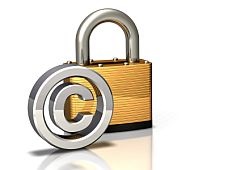37 CFR 351.10 – Evidence
(a) Admissibility. All evidence that is relevant and not unduly repetitious or privileged, shall be admissible. Hearsay may be admitted to the extent deemed appropriate by the Copyright Royalty Judges. Written testimony and exhibits must be authenticated or identified in order to be admissible as evidence. The requirement of authentication or identification as a condition precedent to admissibility is satisfied by evidence sufficient to support a finding that the matter in question is what its proponent claims. Extrinsic evidence of authenticity as a condition precedent to admissibility is not required with respect to materials that can be self-authenticated under Rule 902 of the Federal Rules of Evidence such as certain public records. No evidence, including exhibits, may be submitted without a sponsoring witness, except for good cause shown.
Terms Used In 37 CFR 351.10
- Evidence: Information presented in testimony or in documents that is used to persuade the fact finder (judge or jury) to decide the case for one side or the other.
- Hearsay: Statements by a witness who did not see or hear the incident in question but heard about it from someone else. Hearsay is usually not admissible as evidence in court.
- Oath: A promise to tell the truth.
- Precedent: A court decision in an earlier case with facts and law similar to a dispute currently before a court. Precedent will ordinarily govern the decision of a later similar case, unless a party can show that it was wrongly decided or that it differed in some significant way.
- Testimony: Evidence presented orally by witnesses during trials or before grand juries.
(b) Examination of witnesses. All witnesses shall be required to take an oath or affirmation before testifying. Parties are entitled to conduct direct examination (consisting of the testimony of the witness in the written statements and an oral summary of that testimony); cross-examination (limited to matters raised on direct examination); and redirect examination (limited to matters raised on cross-examination). The Copyright Royalty Judges may limit the number of witnesses or limit questioning to avoid cumulative testimony.
(c) Exhibits—(1) Submission. Writings, recordings and photographs shall be presented as exhibits and marked by the presenting party. “Writings” and “recordings” consist of letters, words, or numbers, or their equivalent, set down by handwriting, typewriting, printing, photostating, photographing, magnetic impulse, mechanical or electronic recording, or other form of data compilation. “Photographs” include still photographs, video tapes, and motion pictures.
(2) Separation of irrelevant portions. Relevant and material matter embraced in an exhibit containing other matter not material or relevant or not intended as evidence must be plainly designated as the matter offered in evidence, and the immaterial or irrelevant parts shall be marked clearly so as to show they are not intended as evidence.
(3) Summary exhibits. The contents of voluminous writings, recordings, or photographs which cannot conveniently be examined in the hearing may be presented in the form of a chart, summary, or calculation. The originals, or duplicates, shall be made available for examination or copying, or both, by other parties at a reasonable time and place. The Copyright Royalty Judges may order that they be produced in the hearing.
(d) Copies. Anyone presenting exhibits as evidence must present copies to all other participants in the proceedings, or their attorneys, and afford them an opportunity to examine the exhibits in their entirety and offer into evidence any other portion that may be considered material and relevant.
(e) Introduction of studies and analyses. If studies or analyses are offered in evidence, they shall state clearly the study plan, the principles and methods underlying the study, all relevant assumptions, all variables considered in the analysis, the techniques of data collection, the techniques of estimation and testing, and the results of the study’s actual estimates and tests presented in a format commonly accepted within the relevant field of expertise implicated by the study. The facts and judgments upon which conclusions are based shall be stated clearly, together with any alternative courses of action considered. Summarized descriptions of input data, tabulations of input data and the input data themselves shall be retained.
(f) Objections. Parties are entitled to raise objections to evidence on any proper ground during the course of the hearing and to raise an objection that an opposing party has not furnished unprivileged underlying documents.
(g) New exhibits for use in cross-examination. Exhibits that have not been identified and exchanged in advance may be shown to a witness on cross-examination. However, copies of such exhibits must be distributed to the Copyright Royalty Judges and to the other participants before being shown to the witness at the time of cross-examination, unless the Copyright Royalty Judges direct otherwise. Such exhibits can be used solely to impeach the witness’s direct testimony.
